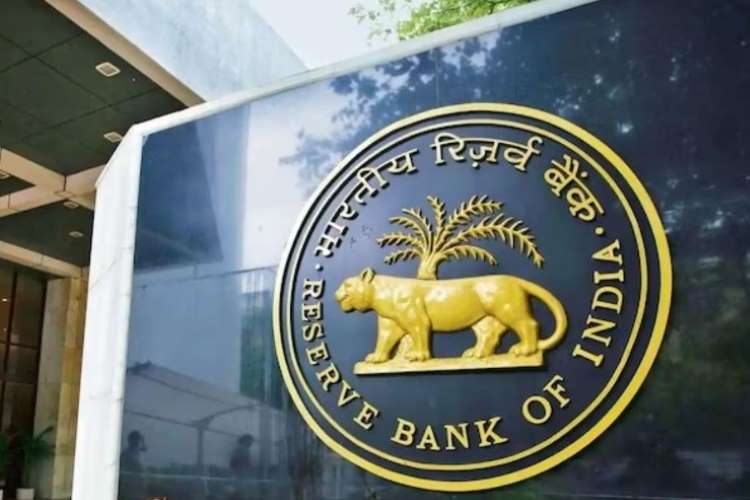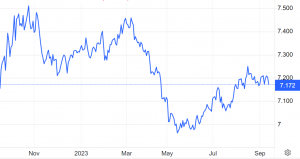
Some early indicators suggest that borrowing costs for Indian companies are rising, as the yield spread between AAA-rated corporate bonds and government bonds has widened by 2 basis points and 4 basis points respectively for three-year and 10-year tenures in September. However, the spread for the five-year tenure has remained unchanged. When yield spreads expand, it can signal changes in the underlying economy or financial markets.
While the yield spread has widened in September, the spread between AAA-rated corporate bonds and corresponding government securities had narrowed in the previous month due to tighter liquidity conditions. The yield spread between AAA-rated five-year corporate bonds and five-year government bonds had narrowed by 7 basis points. On the other hand, the spread for three-year and ten-year bonds had narrowed by 2 basis points and 5 basis points, respectively.
READ | ESG revolution: India can lead the world towards sustainability
What does the gap between bond yields mean
Government bonds, regulated by an authority, are considered the safest investment options due to their sovereign guarantee. In contrast, corporate bonds are riskier, as they carry the potential for default. A higher credit rating, however, indicates better safety. Corporate bonds typically command higher prices than government securities due to inherent risk factors. This premium, referred to as the spread, reflects the disparity in yields between corporate bonds and government securities with matching maturities.
Persistent high borrowing costs result in ongoing debt-service burdens. While policymakers may be tempted not to deleverage, as it appears to support the economy by supporting consumption and mitigating the impact on investment, it comes at the cost of inefficiency and possible economic slump. A report released by the IMF in May already pointed out that China, India, and Thailand had a higher concentration of corporate debt in firms with interest coverage ratios below one, indicating susceptibility to default.
India 10-year government bond yields

In conditions of tight liquidity, the spread is likely to experience an increase. With tax outflows starting from September 15 and increased credit demand during the festival season, the spread is expected to rise even further. Moreover, Non-Banking Financial Companies (NBFCs) are looking to tap the bond market to raise funds to meet their credit disbursement requirements. The yield spread may widen if there is a liquidity shortage. Going forward, yields are expected to remain high for an extended period, with no significant decrease anticipated.
Another reason for rising yields is the recent Shapoorji Pallonji deal. Following this deal, bond market experts expect higher demand, considering that paper is trading in the market at 16%. In July, the Shapoorji Pallonji Group raised Rs 14,300 crore from a host of investors at 18.75% by issuing BBB- bonds.
Corporate bonds in both the AAA and credit space continue to trade at compressed spreads. Experts believe that the approaching busy season and lower net government borrowing in the second half of the year (October-March) will exert upward pressure on these spreads, according to a report by Bandhan Mutual Fund. According to the existing schedule, the government aims to borrow a total of Rs 15.43 trillion through bond sales in the ongoing financial year, with nearly 42% planned to be borrowed during the October-March period.
According to the IMF report, while cash buffers built up in recent years can provide temporary relief against rising interest rates, this strategy may fall short if borrowing costs remain elevated for an extended period. In India, cash holdings of vulnerable firms are particularly low compared to interest costs, leaving them at risk of insolvency. In Asia, even firms with ample cash reserves may face severe pressures if credit conditions tighten and reduce the availability of short-term loans.
The report suggests that financial supervisors must remain cautious in the face of heightened uncertainty, high debt burdens, and rising debt service costs. They should adjust relevant tools as needed to address vulnerabilities in the corporate sector. Central banks must also play their part by separating monetary policy objectives from financial stability goals, using specialised tools such as liquidity and lending facilities to safeguard financial stability while continuing to calibrate monetary policy to address inflationary pressures.
Meanwhile, surplus liquidity in the banking system has decreased significantly to Rs 41,706 crore on Monday, down from Rs 86,093 crore on Sunday, despite the Reserve Bank of India’s decision to discontinue the incremental cash reserve ratio (I-CRR). The funds that were impounded are expected to be returned to banks in a phased manner ahead of the festival season when demand for cash rises. Of the total I-CRR maintained, 25% will be disbursed on September 9, the next 25% on September 23, and the remaining 50% on October 7.
The global trends in the spread between government and corporate borrowing have been mixed in recent years. In the US, the spread has narrowed significantly since the financial crisis of 2008. This is due to a number of factors including the Federal Reserve’s quantitative easing programme, which has lowered interest rates and made it cheaper for companies to borrow funds.
In other parts of the world, the spread between government and corporate borrowing has widened in recent years. This is due to a number of factors, including rising economic uncertainty, concerns about sovereign debt defaults, and the increasing risk of inflation.
READ | Government may release NMC regulations in diluted form
Some of the factors that affect the spread between government and corporate borrowing are economic growth, inflation, interest rates, political risks and sovereign debt risk. When economic growth is strong, companies are more likely to be profitable and therefore less likely to default on their debt. This can lead to a narrowing of the spread. When inflation is high, it can erode the value of corporate earnings and make it more difficult for companies to repay their debt, leading to the widening of the spread.
A low interest regime also can result in narrowing of the spread. When there is political instability, it can make investors more risk-averse and lead to the widening of the spread. Sovereign default risk can also lead to a widening of the spread.
The spread between government and corporate borrowing is an important indicator of the financial health of the corporate sector. A widening spread can be a sign of financial stress in the corporate sector and can lead to higher borrowing costs for companies. The widening of spread between government and corporate borrowing can make it difficult for companies to borrow money. It also increases the risk of corporate defaults and financial instability. High cost of borrowing for corporates can dampen economic activity.
Anil Nair is Founder and Editor, Policy Circle.

